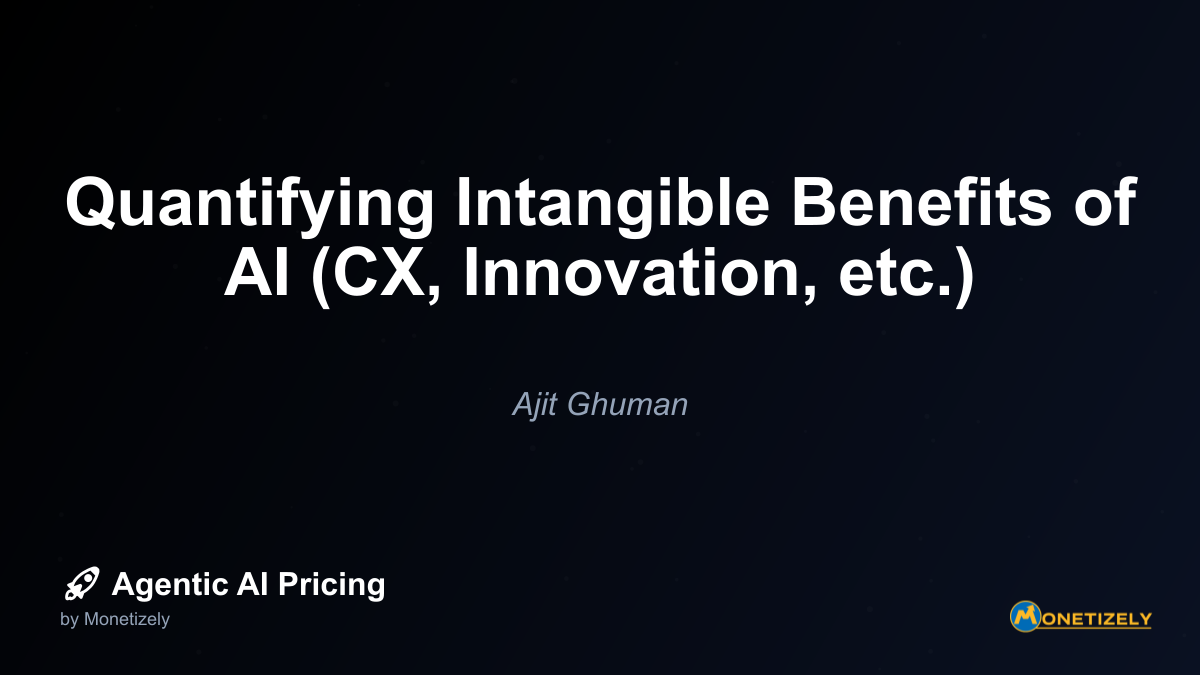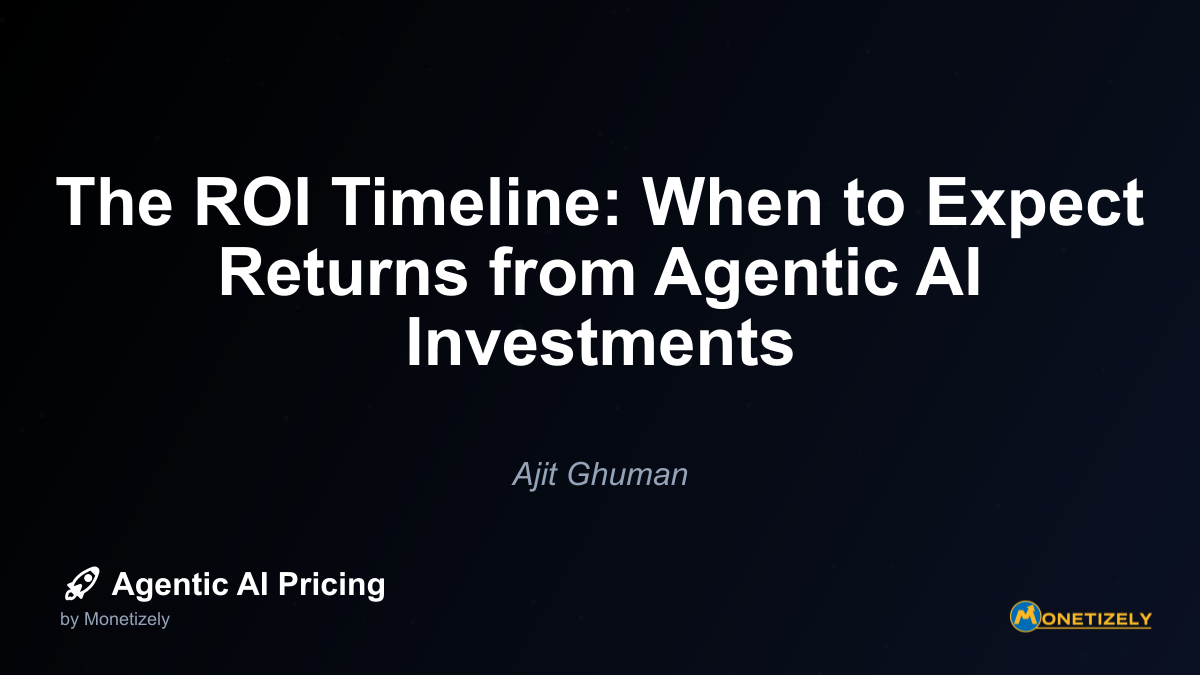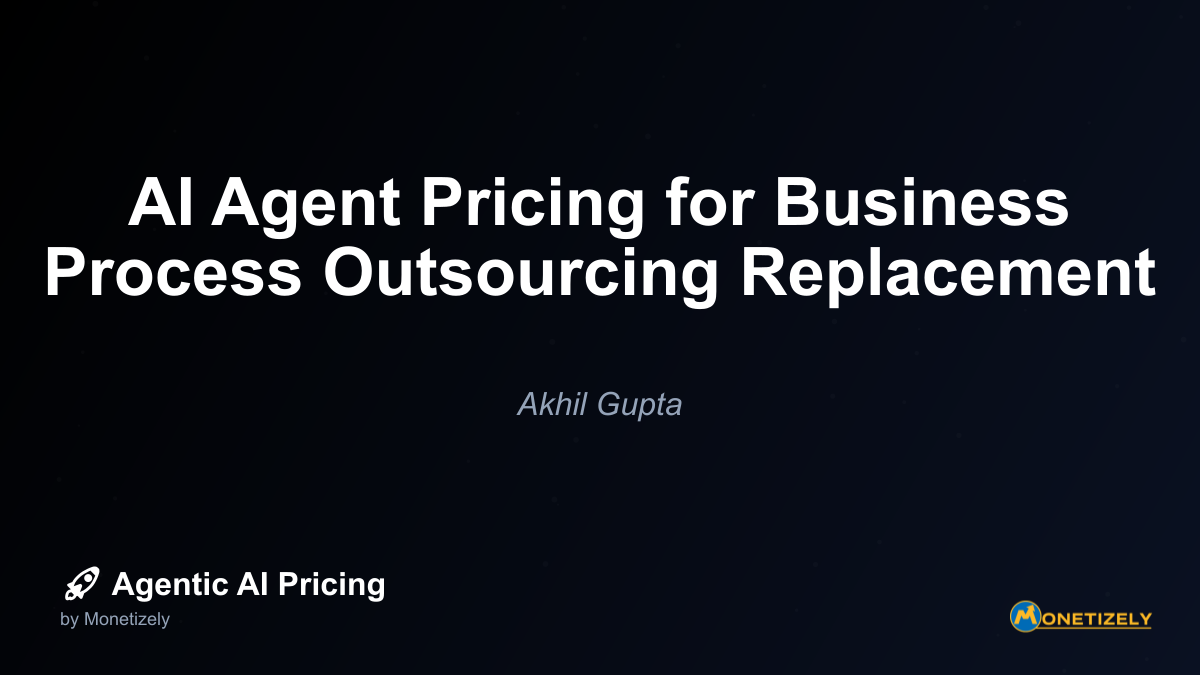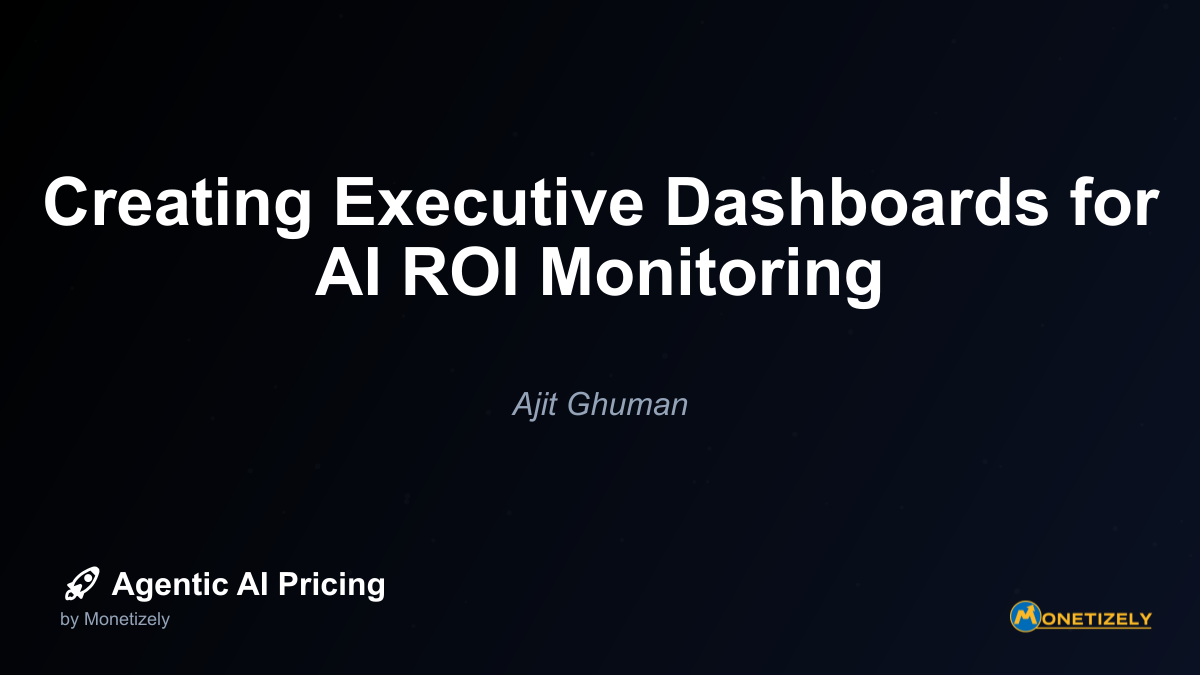· Akhil Gupta · ROI and Value · 4 min read
Balancing Efficiency vs. Innovation in Evaluating AI ROI.
AI and SaaS Pricing Masterclass
Learn the art of strategic pricing directly from industry experts. Our comprehensive course provides frameworks and methodologies for optimizing your pricing strategy in the evolving AI landscape. Earn a professional certification that can be imported directly to your LinkedIn profile.
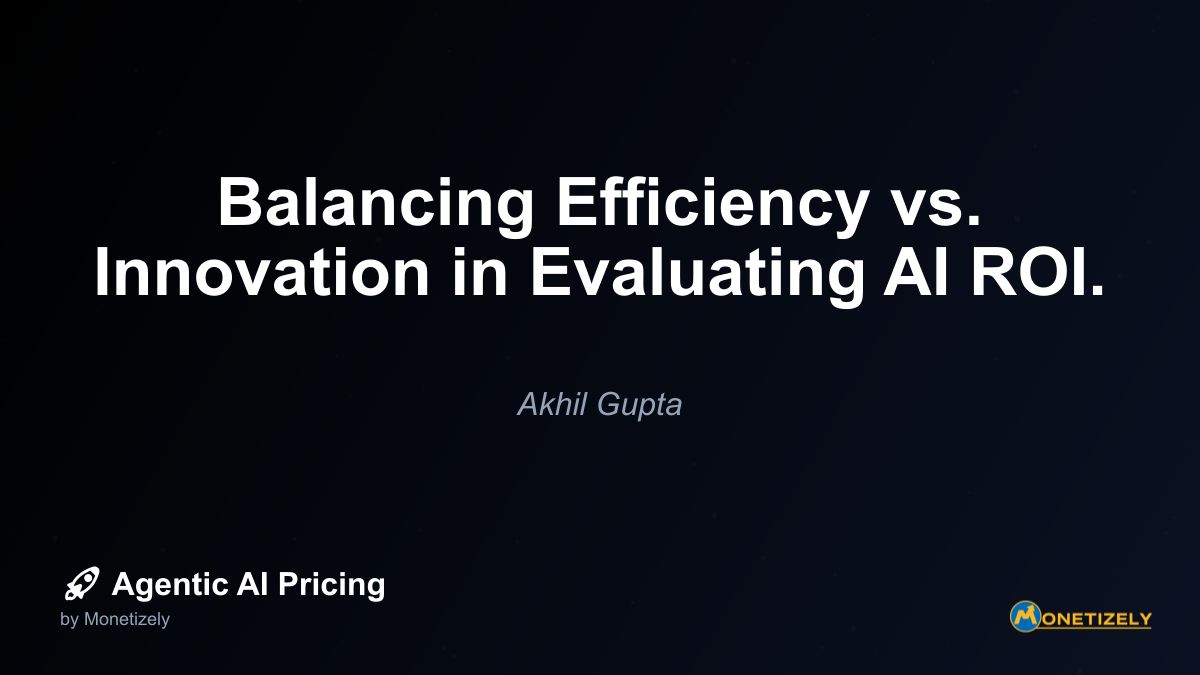
Integrating AI ROI with Strategic Planning
For maximum organizational impact, AI ROI frameworks should connect directly to broader strategic planning processes. This integration ensures that technology investments align with and advance core business objectives.
Consider implementing these connection points:
1. Strategy-Driven Technology Roadmaps
Rather than evaluating AI initiatives in isolation, develop technology roadmaps explicitly linked to strategic priorities. This approach:
- Ensures AI investments advance core business objectives
- Provides context for balancing efficiency and innovation considerations
- Creates natural accountability for strategic alignment
- Facilitates executive-level understanding of technology investments
2. Capability-Based Planning
Frame AI investments around capability development rather than standalone projects:
- Identify critical organizational capabilities requiring enhancement
- Map how specific AI initiatives contribute to these capabilities
- Evaluate ROI in terms of capability maturity improvement
- Track how enhanced capabilities translate to competitive advantage
This approach naturally accommodates both efficiency improvements (enhancing existing capabilities) and innovation initiatives (developing new capabilities).
3. Scenario Planning Integration
Connect AI evaluation frameworks with scenario planning exercises:
- Assess how AI investments perform across different potential futures
- Value flexibility and adaptability in uncertain environments
- Identify capabilities that create “future-proofing” benefits
- Recognize option value created by innovation-oriented investments
For additional insights on measuring ROI for AI agent implementations, you might find our complete guide on AI ROI measurement helpful.
Common Pitfalls in Balanced Evaluation
Organizations implementing balanced evaluation frameworks should be aware of these common challenges:
1. False Precision
Innovation benefits resist precise quantification, yet organizations often demand exact ROI calculations. This creates pressure to:
- Assign arbitrary financial values to strategic benefits
- Focus exclusively on easily quantifiable metrics
- Undervalue genuinely transformative possibilities
Instead, embrace appropriate levels of precision—use ranges, scenarios, and qualitative assessments for innovation benefits while maintaining rigorous quantification for efficiency gains.
2. Premature Evaluation
Innovation benefits often emerge through unexpected applications discovered during implementation. Rigid pre-implementation ROI requirements can prevent these discoveries.
Consider implementing:
- Stage-gated funding with evolving evaluation criteria
- Explicit “discovery phases” with different success metrics
- Regular reassessment of benefits as implementation progresses
3. Siloed Assessment
When efficiency and innovation evaluations occur in separate organizational functions (e.g., finance vs. strategy), the organization loses sight of their interconnected nature.
Create integrated evaluation teams that include:
- Financial analysts for efficiency quantification
- Strategic planners for innovation assessment
- Business unit leaders for operational context
- Technology experts for implementation realism
This cross-functional approach ensures comprehensive evaluation that captures both dimensions.
The Future of AI ROI: Adaptive Evaluation
As agentic AI systems become more sophisticated, evaluation frameworks must evolve accordingly. Future approaches will likely emphasize:
1. Emergent Value Recognition
Advanced AI systems often create value in ways not anticipated during initial implementation. Future frameworks will need mechanisms to:
- Systematically identify unexpected benefits
- Rapidly incorporate new value streams into evaluation models
- Credit initiatives for serendipitous discoveries
- Share insights across organizational boundaries
2. Ecosystem Value Assessment
As AI systems increasingly operate within broader technological ecosystems, ROI models must expand to capture network effects:
- Value created through API integrations
- Benefits from data sharing across applications
- Complementary capabilities enabled by platform approaches
- Ecosystem position and influence
3. Continuous Evaluation
Rather than point-in-time assessments, future frameworks will implement continuous evaluation cycles:
- Real-time performance dashboards with efficiency and innovation metrics
- Automated identification of emerging value patterns
- Dynamic reallocation of resources based on evolving returns
- Continuous learning loops for evaluation refinement
Conclusion: Embracing the Dual Nature of AI Value
The most successful organizations recognize that meaningful AI value creation requires both efficiency improvements and innovation enablement. By developing evaluation frameworks that honor this dual nature, leaders can make more balanced investment decisions that deliver immediate returns while positioning for long-term advantage.
Key principles for this balanced approach include:
- Acknowledge the different measurement challenges of efficiency and innovation benefits
- Develop multi-horizon evaluation frameworks with appropriate metrics for each timeframe
- Implement portfolio thinking that allows for different risk-return profiles
- Connect AI evaluation to broader strategic planning processes
- Create cross-functional governance that values both dimensions
Organizations that master this balanced perspective will not only achieve superior returns on their AI investments but will develop the adaptive capabilities necessary for sustained leadership in an increasingly AI-driven business landscape.
As you refine your own approach to AI ROI evaluation, remember that the goal isn’t perfect measurement—it’s better decision-making that recognizes both the immediate efficiency gains and transformative innovation potential that agentic AI systems can deliver.
Co-Founder & COO
Akhil is an Engineering leader with over 16+ years of experience in building, managing and scaling web-scale, high throughput enterprise applications and teams. He has worked with and led technology teams at FabAlley, BuildSupply and Healthians. He is a graduate from Delhi College of Engineering and UC Berkeley certified CTO.
Pricing Strategy Audit
Let our experts analyze your current pricing strategy and identify opportunities for improvement. Our data-driven assessment will help you unlock untapped revenue potential and optimize your AI pricing approach.

